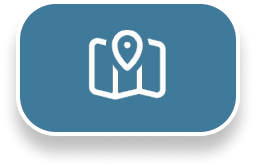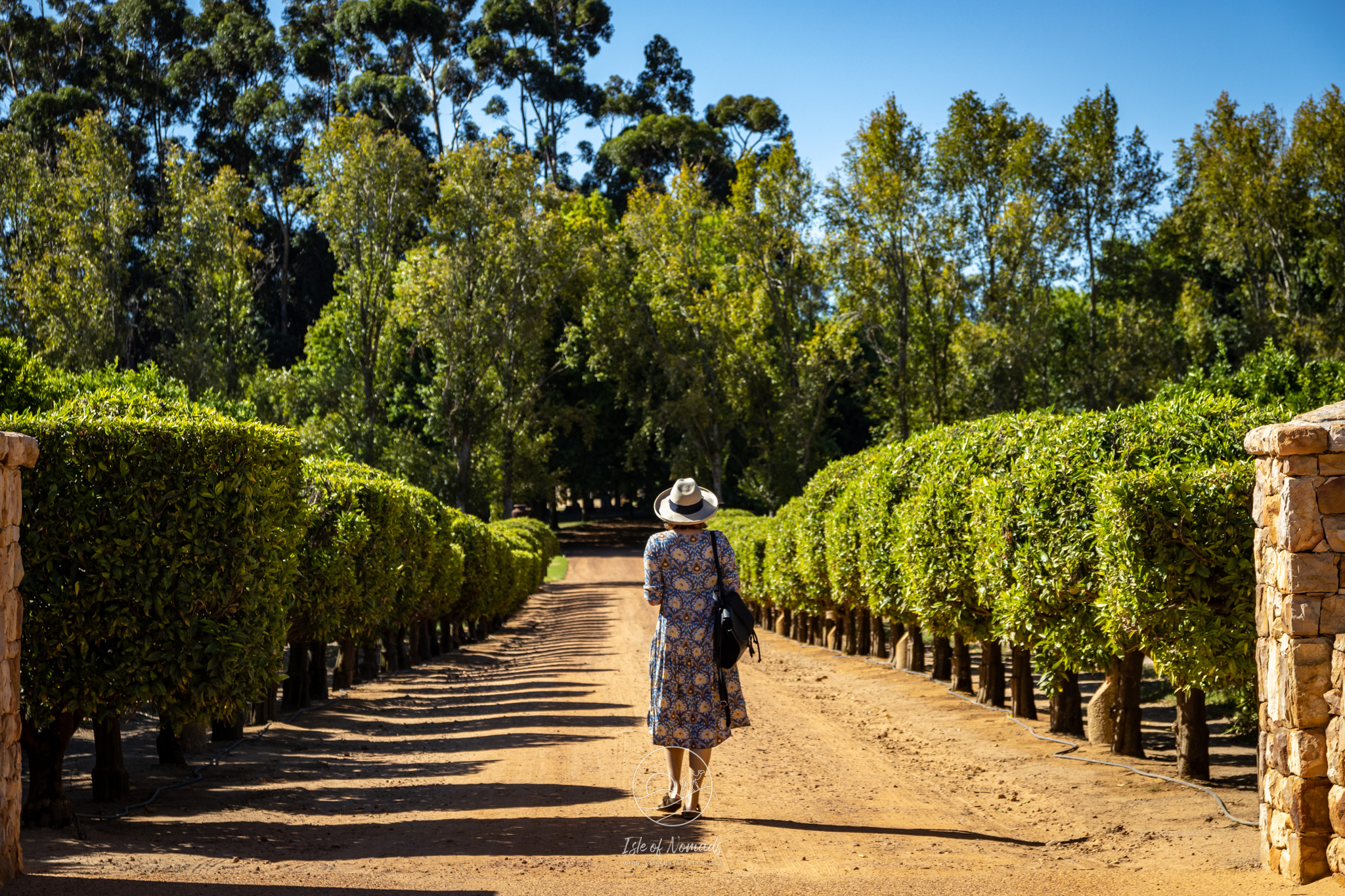8 to 12 week self-drive itinerary for South Africa, Botswana and Namibia (no 4x4 needed!)

Content
- Map Overview
- What to do in 8 weeks in Southern Africa? Weeks 1 & 2
- What to do in 8 weeks in Southern Africa? Weeks 3 & 4
- What to do in 8 weeks in Southern Africa? Weeks 5 & 6
- What to do in 8 weeks in Southern Africa? Weeks 7 & 8
- What to do in 10 weeks in Southern Africa?
- What to do in 12 weeks in Southern Africa?
- Try our Wine app
- Complete Travel Guide
Key information at a glance
| Price for rental: | 30 - 60 EUR / day, depending on car type and time of year |
| Itinerary lenghth: | 8 to 12 weeks |
| Documents needed: | International drivers’ license |
| Best time to travel: | depending on region, for whole tour best is July to November |
| For you if: | you love an adventure, you love nature, you are a seasoned driver |
| Not for you if: | you are uncomfortable driving on non-tarred roads; long times spent in a car isn't your thing |
| Important Notes: | Especially a longer trip through all three Southern African nations should be planned beforehand so you don't run into problems with border crossings or hiccups on the road |
| Country Overview: | Head here for a general overview over South Africa, Namibia and Botswana |
Looking to do a roadtrip in just South Africa? We've got you covered here.
This article will provide a detailed itinerary as well as all accommodation and restaurant tips for your self-drive adventure in South Africa, Namibia and Botswana. If you are looking for a more general overview, check out our article on the logistics and "how to" of such an endeavour. We also wrote an article just on the border crossings as well as one on what car to take.
Prior to this trip, I spent hours upon hours researching where to sleep, where to eat, and what to visit - but it was all worth it in the end, as this was one of Cordt and my favourite trips ever. Just be forewarned, this article is going to be an information dump of all the things that we liked and also some of the ones we didn't like and how we would have done them differntly, so brace yourselfes! I'm super excited if all this can help some of you to have a trip of a lifetime, too.
A quick note on my use of "Southern Africa" in this article: Although it can be confusing - as the country at the southern tip of Africa is also called very similar to the whole region - the southernmost region of the African continent is commonly called "Southern Africa". The nations included in this geographic region include Botswana, Lesotho, Namibia, South Africa, and Swaziland. Often, the southern parts of Zambia, Zimbabwe and Angola are also included in the term.
Ok, let's get into it!
Map Overview
Let's start with a quick overview of the main sights that you can choose to include in your itinerary in South Africa, Namibia and Botswana. What is the best time to travel, you ask? Have a look at this article where I wrote down a detailed account of what season is best for what location.
What to do in 8 weeks in Southern Africa? Weeks 1 & 2
You can drive the whole loop from Cape Town across Namibia and Botswana and back through South Africa in 8 weeks, however it will be quite a packed itinerary with a few very long driving days. If you have a few days more, it will be much more relaxing - head to the 10 and 12 week version of this route for details on how to ammend the 8 week itinerary in this case.
--Week 1--
What to do:
There is so much to do in the Cape Region that you could easily spend a whole month here and not get bored, but I would recommend to base yourself in Cape Town, get your rental car on Day 1 or 2 of your trip and do several day trips in the region. We have written a separate article on spending 7 days in and around Cape Town, but here is the gist of it:


Spend two days exploring Cape Town proper: Wander around Bo Kaap, go to V&A Waterfront, check out Oranjezicht City Farm Market, the Zeitz Museum of Contemporary Art Africa and wander around the beaches of Sea Point. Do not miss the Botanical Gardens in Cape Town! I love Botanical Gardens and go in almost all places I visit, but no garden I have been in even comes close to Kirstenbosch. If you are there during the South African summer, check their website for their sunset concerts. It is just a beautiful experience to listen to music, sip a glass of wine, and sit with the view of the Table Mountain.
Spend another day hiking Table Mountain(Day 3): If you are fit, go up the India Venster trail. Before hiking this for the first time, we read a lot of horror stories, but even though it is definitely a challenge and Cordt struggled due to his fear of hights, it is 100% worth it and you can manage if you are a regular hiker. For most of the way you have to scramble up and use ropes to haul yourself up. Even though it seemed relatively safe, it is not for the faint of heart. We would not recommend to take this route down though, as that would make it even more dangerous. If you are not feeling adventurous but are relatively fit, take the Platteklip Gorge trail up Table Mountain. If you feel like more of a short walk, do the Lions Head hiking trail and then take the cable car up and down Table Mountain. After the hike(s), take an Uber (or walk down if you are still not tired) to Camps Bay and end the day on the beautiful beaches there, maybe heading to o-Vine Wine & Grill House for dinner.

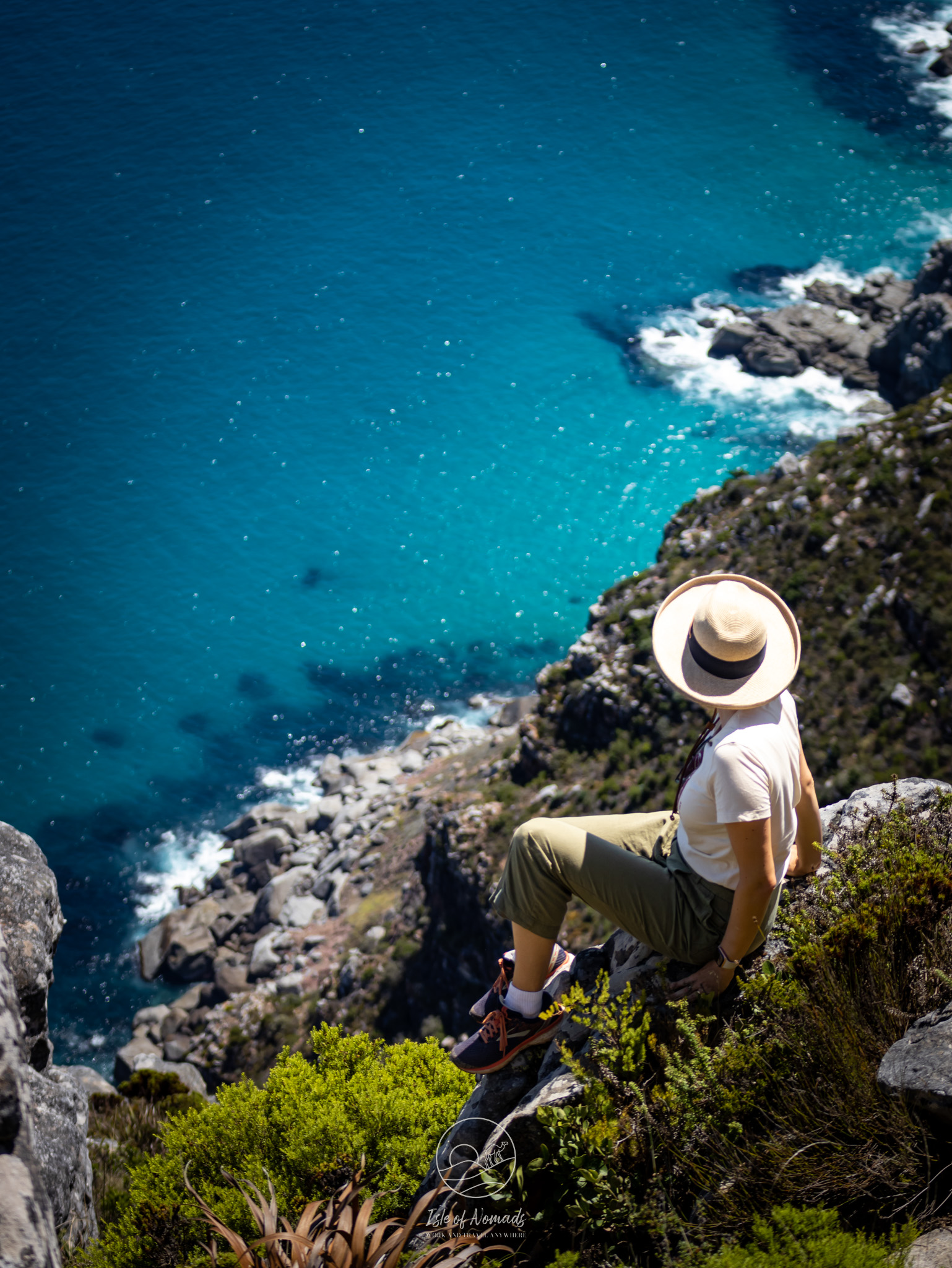
Spend two days exploring the Cape Peninsula(Days 4&5): Drive the Chapmans Peak Drive, stopping at all the beautiful lookout points. If you feel like a hike, I recommend Chapmans Peak Trail - it has incredible views and gives you a complete panorama of this part of the Peninsula. Stop in Noordhoek to get ice cream at Kristen's Kick-Ass Ice Cream. If you're there during the summer and on a Thursday evening, plan your trip so you can go to Cape Point Vineyards for their sunset food truck and picnic festival, it has an amazing atmosphere and you can eat different foods and sip wine while watching the sunset. Drive to Simons Town to see the penguins (if you want to save some money, you can just skip the fenced off area and instead wander the beach and you will see plenty). Then continue all the way down to Cape Point: Hike the Kaap die Goeie Hoop-voetpad, take a picture at the Cape of Good Hope sign and walk up to the Cape of Good Hope Lighthouse.
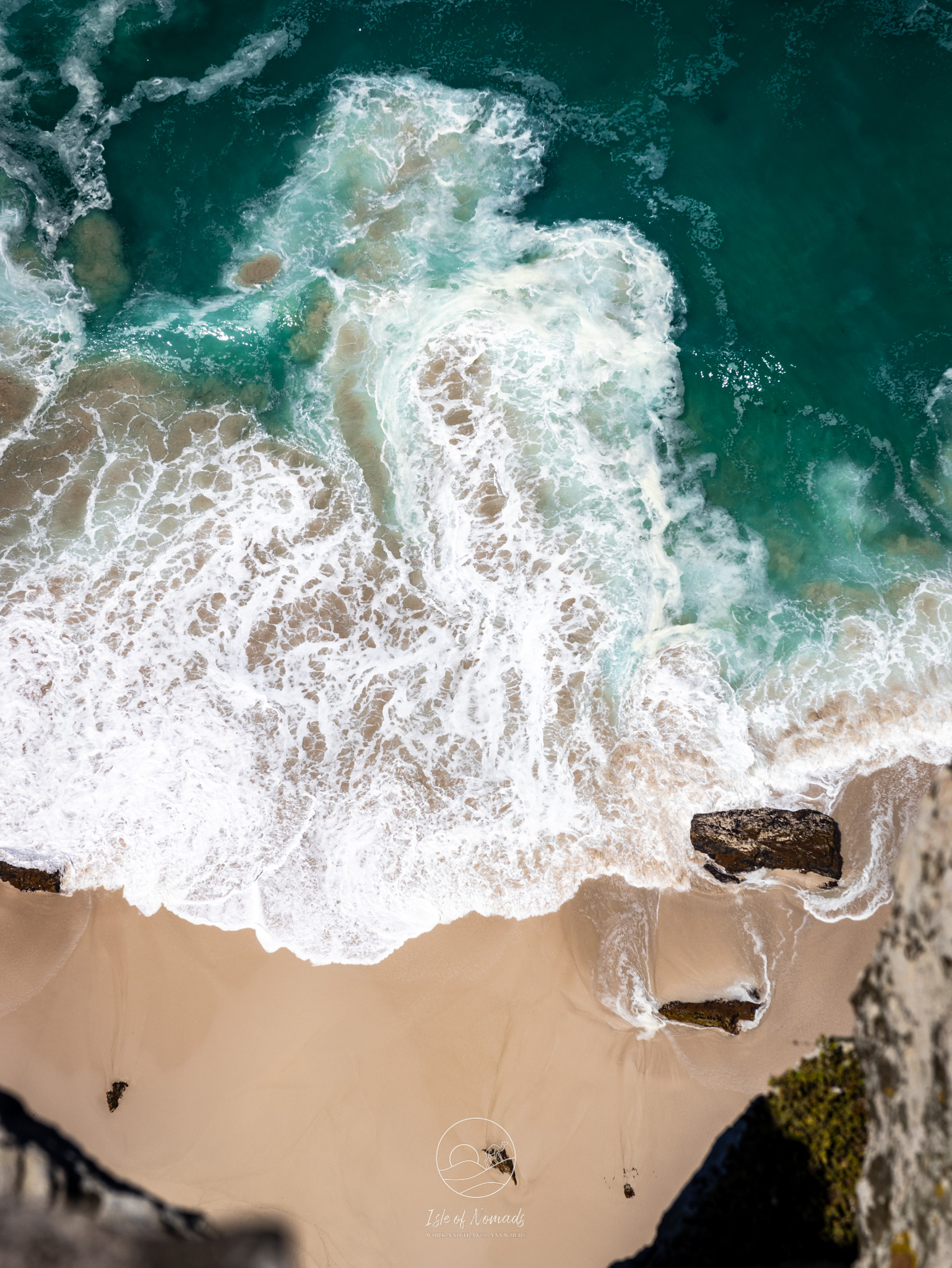

Do one day trip to Stellenbosch(Day 6): Drive to Stellenbosch or, if you would like to go wine tasting, join an organised tour of several estates. Even if you do not like wine, I would recommend you to allocate one day to this region as it's also got beautiful nature and the wine estates are worth a visit for their beauty even if you end up not drinking any wine. We can recommend Vergelegen Wine Estate, Waterford Estate and Rust en Vrede Wine Estate. If you get the chance, join a lunch at The Table at De Meye. It's a beautiful estate and you dine outside sitting on tables in their garden. If you have a bit more than one day, I'd recommend to include Old Nectar Gardens and Dylan Lewis Studio & Sculpture Garden.
Spend one day driving False Bay(Day 7): Drive the Sir Lowrys Pass from Cape Town and then through Bot Rivier down towards the coast. At Stony Point Nature Reserve you can again see many penguins, and in Pringle Bay you could get lunch at Hake Away and sit on the beach to eat it. Drive back slowly, taking in the views of False Bay from the other side of the bay.
One day for an outdoor adventure(Day 8): Depending on the season, there are many amazing outdoor adventures to be had in the Cape Region. We loved the Cape Canopy Tour, you could go abseiling with Frixion Adventures or snorkeling with seals.
Where to stay: There are plenty of beautiful AirBnBs and Hotels in Cape Town - even though we've been a few times, we usually end up staying outside of Cape Town so I can't personally recommend a specific place, but I am sure you will find something easily. For a full list of our recommendations see our Google Map.


Where to eat:
Here are two of our favourite restaurants in the Cape Town area - for a full list see our Google Map:
Bistro Sixteen82: This is our favourite restaurant in Cape Town, don't miss it when you are there! It's a bit more expensive but sooooo good. I'm not kidding when I say we've tried almost all of the dishes they have and were never disappointed.
The Table at De Meye: Even if you were to drive here just for lunch, it'd be worth it. The ingredients are all organic and you will have the delicious meal while sitting in their beautiful garden.
--Week 2--
At the start of your second week, drive into the Cederberg Mountains. As most of the accommodations in the mountains are self catering ones, stock up on groceries as needed. A general note on this: Almost all accommodations along this route come with Braai (Barbecue) areas, so we bought coal and lighter etc. at the beginning of our trip and just bought barbecue meat and veggies as needed.
Spend 2-3 days in the mountains (Days 9-11). An amazing hike is to the Wolfberg Arch, but whether you can do the full hike depends on when you are visiting - in the summer it gets incredibly hot. When we were there end of October, we only managed to hike to the top of the mountain and then had to turn around. After the hike, you can cool down in the many streams and rock pools in the mountains, e.g. Maalgat Rock Pool.
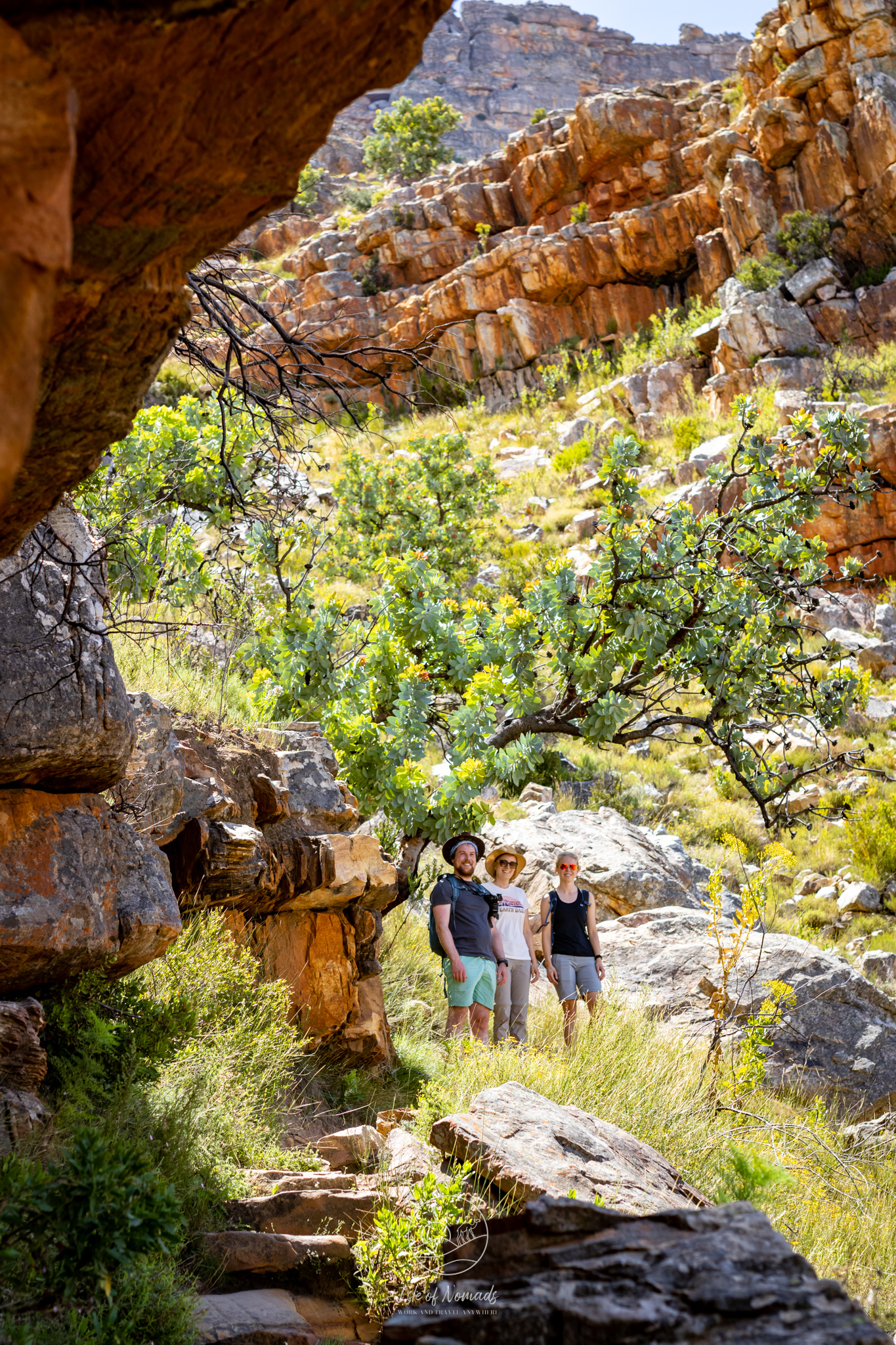
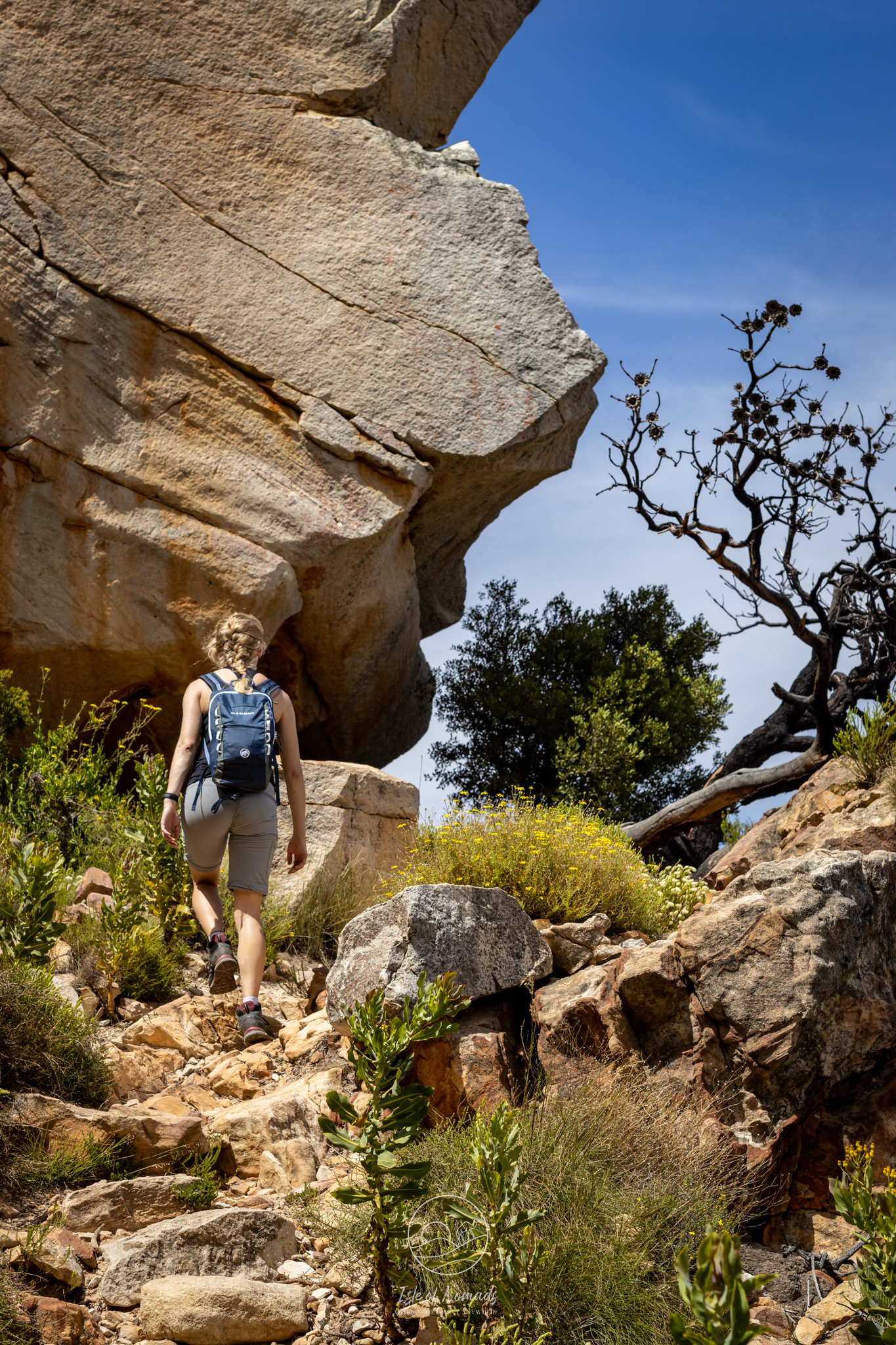
Visiting the Stadsaal Caves and Truitjieskraal is also worth the detour - the paintings inside the caves are believed to be around 8000 years old.
If you are visiting during August, you should plan at least one day to try and see the Namaqua Wildflowers in the Namaqua National Park - these elusive wildflowers bloom only for a few days and turn the normally arid desert into a field of flowers. The exact days they bloom change every year, but there is a yearly forecast and as soon as the first ones are spotted you can read about it online. If in doubt, ask your accommodation in Cederberg about the flower forecast.
A full day of driving (ca. 6h30min, ca. 670km, Day 12) gets you across the border and into Namibia. Stay two nights (Days 13&14) in the region around Grunau - we stayed at White House Guest Farm and were very happy. It's nothing to write home about, but very clean and the hosts are very friendly. Spend a full day to visit Fish River Canyon - this is a great viewpoint and you can take a break and get coffee at the canyon roadhouse on the way. The park entrance fee as of 2024 is NAD160/US$11 per person.

For those who are passionate about hiking and in good physical condition, consider taking on the challenge of hiking the entire length of Fish River Canyon. This trek typically spans 4-5 days and is quite demanding, but it’s a rewarding experience, especially during the cooler months of the South African winter. If you have the time and are looking for an adventure, this could be the perfect addition to your itinerary. Head to the Stingy Nomads Blog if you'd like to know more about this option.
What to do in 8 weeks in Southern Africa? Weeks 3 & 4
--Week 3--
Week 3 starts with another driving day (Day 15): From Grunau over Keetmanshoop to Luderitz, on the coast of Namibia (ca. 5h, 480km). In Keetmanshoop we stopped at the Quiver Tree Forest as well as the Spielplatz der Riesen. These two are a nice break from the drive but if you are in a rush you won't be missing much if you don't do this small detour.
Spend two nights in Luderitz (Days 16&17)so you have a full day to visit the Kolmanskop ghost town. For the best pictures, arrive early in the morning when the sand is still untouched from the footsteps of other tourists. The entry is N$130 Namibian dollars (ca. 7 USD) for a standard entry from 8 am to 1 pm or N$330 Namibian dollars for an all-day ticket, including sunrise and sunset.
We found this a fascinating destination - the whole town is already half covered in sand and it is estimated that in a few decades, it will completely disappear. Its history is intriguing as well: it was once a very rich mining town that was founded when worker Zacharias Lewala found a diamond while working in this area. The German Empire then declared it as "Sperrgebiet" and started to exploit the diamond field. Today, access to the area is still highly restricted as you can still find diamonds. However, finder's not keepers in this instance as all diamonds legally belong to the Namibian state.


If you really love ghost towns, you can join a tour that takes you to Elizabeth Bay Ghost Town inside the Sperrgebiet. As this is inside the restricted area, you cannot go by yourself. It is also quite inaccessible as it is much deeper into the desert in the South of Luderitz.
Where to stay in Luderitz: We weren't super happy with our AirBnB in Luderitz, so just based on research and reviews we recommend Tranquillity Guest House, Prospectors Inn Hotel or 2FiftySix on Second.
There are not that many restaurants in Luderitz and we mainly cooked at home. The Desert Deli made a nice coffee.
After Luderitz, you need to drive 500km (ca. 6 hours, Day 18) to reach Sesriem, the entrance to the NamibRand Nature Reserve, where the famous Sossusvlei and Deadvlei are located. Unfortunately, if you do not have your own tent there is no way to do this part of the journey in a budget-friendly way. After a lot of back and forth, we settled on staying at Desert Quiver Camp. Even though the experience was not stellar (as could be expected at the price point), I am convinced this had the best price-quality ration in the area. Make sure you stock up on water and groceries before driving to the camp - it is self-catering and even though you can purchase meals in the desert, they are more pricy.


Stay three full nights in Sesriem (Days 18-21). This will give you plenty of time to explore the main sights in the park: Deadvlei, Sossusvlei, Namibia and Big Daddy Dune. To reach these destinations, you can drive your vehicle into the park, leave it at the parking lot and take the shuttle that leaves you at the main sights. Entrance fees to the park are 100 NAD per person for non-residents, the shuttle costs 150 NAD per person.
Within Sesriem, you can hike up several dunes. The most popular for sunrise and/or sunset is Dune 45. It takes around 20 to 30min to hike up and the views are incredible.
If you have to choose just one dune to hike up, make sure you pick Big Daddy Dune - from the top you have a beautiful view of the surrounding desert and the Deadvlei, the famous white clay pan that is dotted with the blackened remnants of the trees that once stood here. You can then run down the dune and walk over the Deadvlei Salt pan - walking around in the scorching heat it's a crazy thought that this area was once full of water.

From the parking lot, you can hike a short 2km to Hidden Vlei, a small salt pan. When we went we saw a lot of wildlife there as part of the salt pan was flooded, so I can highly recommend this small detour.
By now you should have enough of walking up dunes (spoiler alert: it is incredibly exhausting), but if you still have energy you can include Big Mamma Dune into your itinerary.
If you have a bit of time, you can also drive a small detour to visit Sesriem Canyon. We did and while it is pretty, it is nothing compared to Fish River Canyon and other canyons you might have seen, so don't feel bad if you decide to skip it.
A thing you should definitely not skip is to go stargazing after the sun has set - the Namib Desert is one of the best places in the world to take amazing pictures of the night sky. If it is a clear night (which it almost always is in the desert), just step outside and marvel at the beauty of our night skies.

--Week 4--
On Day 22, drive 350km (ca. 4h 30min) from Sesriem to Swakopmund. Make sure you stop at the Tropic of Capricorn Sign which makes for a fun picture. If you reach Walkvis Bay for lunch, you could eat at Godenfang Restaurant Walvis Bay. After lunch you could head to the Flamingo Lagoon. Spend the afternoon wandering Swakopmund - it's not a big town, but with some cute architecture.
Spend one day in Swakopmund on one of the many outdoor activities. We did a Fat Bike Tour through the desert of which I have to be honest I was quite sceptical at the beginning - how fun can just biking on sand be? Turns out, a lot of fun. If you are there from July to November, you could go whale and/or dolphin watching, I can recommend Swakopmund Adventures.
You can either do Spitzkoppe as a day trip from Swakopmund (1h30min driving time one way) or spend one night there (Day 24). Spitzkoppe is a 1728m high peak that stand out dramatically from the flat surrounding plains. Its granite is more than 120 million years old! We later discovered they have a beautiful desert lodge there - it's expensive, but looks really nice.


For most hikes in Spitzkoppe, you need to arrange a guide in the morning upon arriving there (between 6:30 am and 8:30 am). We did not know this before, so we stuck to the two shorter hikes you can do without a guide (Bushman’s Paradise and Small Bushman’s Paradise). I still thought that the drive there was worth it as the Spitzkoppe mountain and the park in general are very impressive.
For a full list of our recommendations of where to stay and where to eat in Swakopmund, refer to our Namibia Google Map!
Make your way to Etosha National Park on day 25 (ca. 500km, 5-6hours). If you like shipwrecks and unusual sights, drive a small 30min detour up the coast towards Hentiesbaai before turning land inwards. Stop at the Zeila Shipwreck. Driving this route really gives you a feeling for where the Skeleton coast got its name from: Even if sailors survived their ship being torn apart by the wind and the rough sea, once ashore, the vast expanse of the desert extends for miles in every direction, creating an inhospitable environment that offered little hope of survival.

Spend at least two full days (Day 26 and 27) in Etosha National Park. Get up early on both days so you are inside the park at sunrise - you are most likely to see lions in the mornings when it is not as hot.
You need to decide whether you think it's worth it to stay inside the National Park or if you are okay with driving a few hours each day to go from the park and back. We decided to stay outside of the park as I could simply not find a well-rated and relatively affordable accommodation inside the park. But this is particular to Cordt and my decision making: I hate nothing more than to pay a lot of money for bad service and/or a dirty and run-down accommodation and would rather support a small homestay, even if I have to drive longer to reach my destination. That being said I know quite a few people that stayed inside Etosha and really enjoyed it - if you do, you are the first in the morning in the park and can also go on night safaris.
Another consideration is that Etosha is a huge park. In order to maximise the time there, you could book two nights at different ends of the park. This would allow you to see as many animals as possible without having to drive back and forth each day.
If you decide to stay outside of the park, I can recommend the Buschberg Guestfarm where we also stayed.

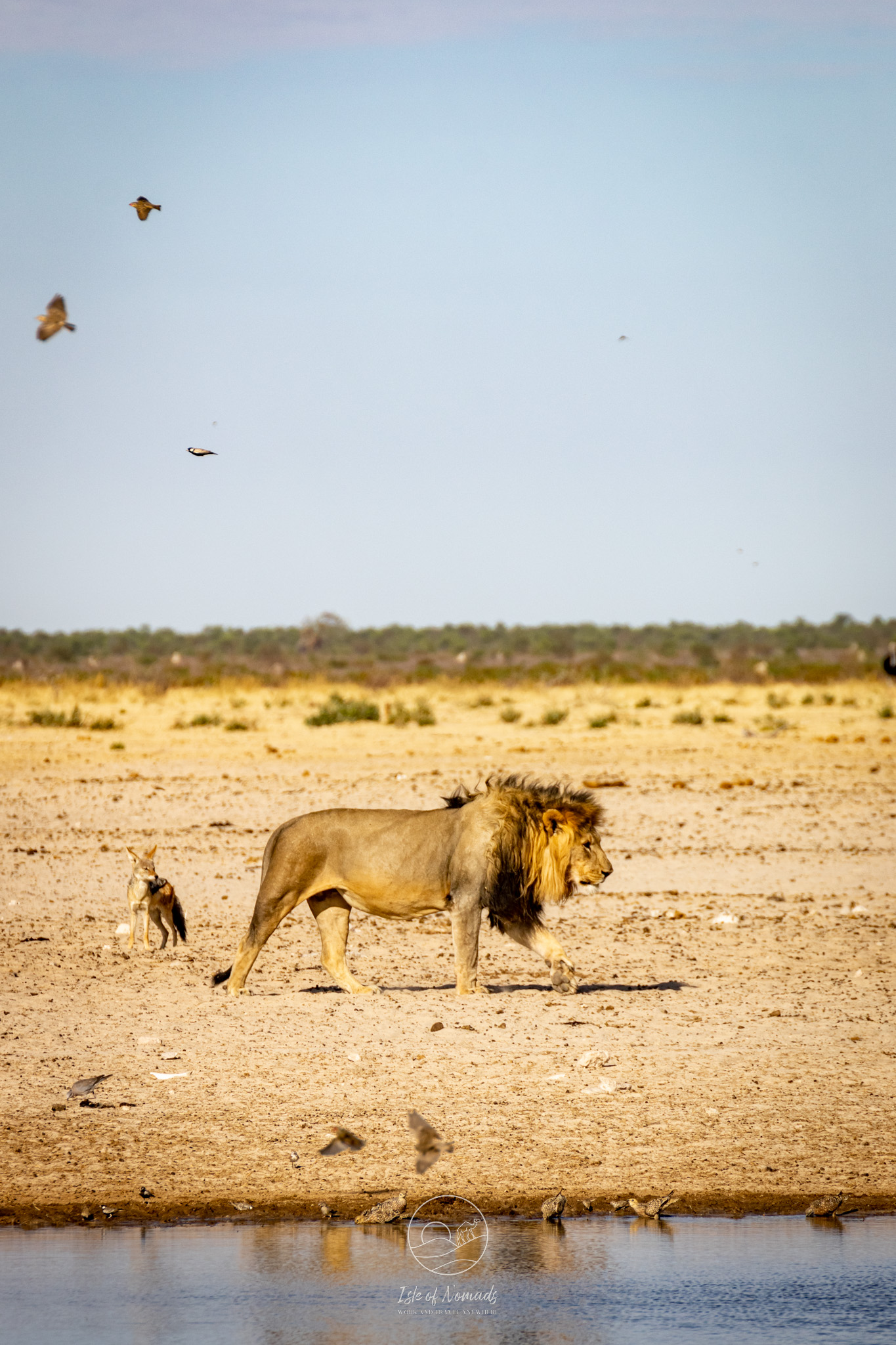
The drive to Maun in Botswana through the Caprivi strip is 1220 km long and will take at least two days (Day 28 and 29). We rushed through this as we did not have a lot of time - if you have a bit more than 8 weeks, consider staying 1-2 days in the Caprivi Strip and going on a few river safaris. Divava Okavango Lodge & Spa seems to be a nice place (we only had lunch there).
If you want to stay in the time plan for 8 weeks, drive 590km (ca 6h 30min) on Day 28 and spend one night in Rundu (we stayed at this AirBnB). Our second night (Day 29) in the Caprivi strip was at Sharwimbo River Camp. Even though it was really cool to sleep in the middle of the jungle - we even saw a Hippo from our balcony! - I was not very happy with our stay: When we were there the place was being renovated and even though that meant half of the ammentities were unavailable, they charged us the full price for the night.
Although it was a bit rushed, I loved our drive through the Caprivi strip. You can really tell that not many people drive through this region - it is hard to find accommodations and other tourist infrastructure besides a few lodges and the landscape is completely different from the other parts of Namibia.
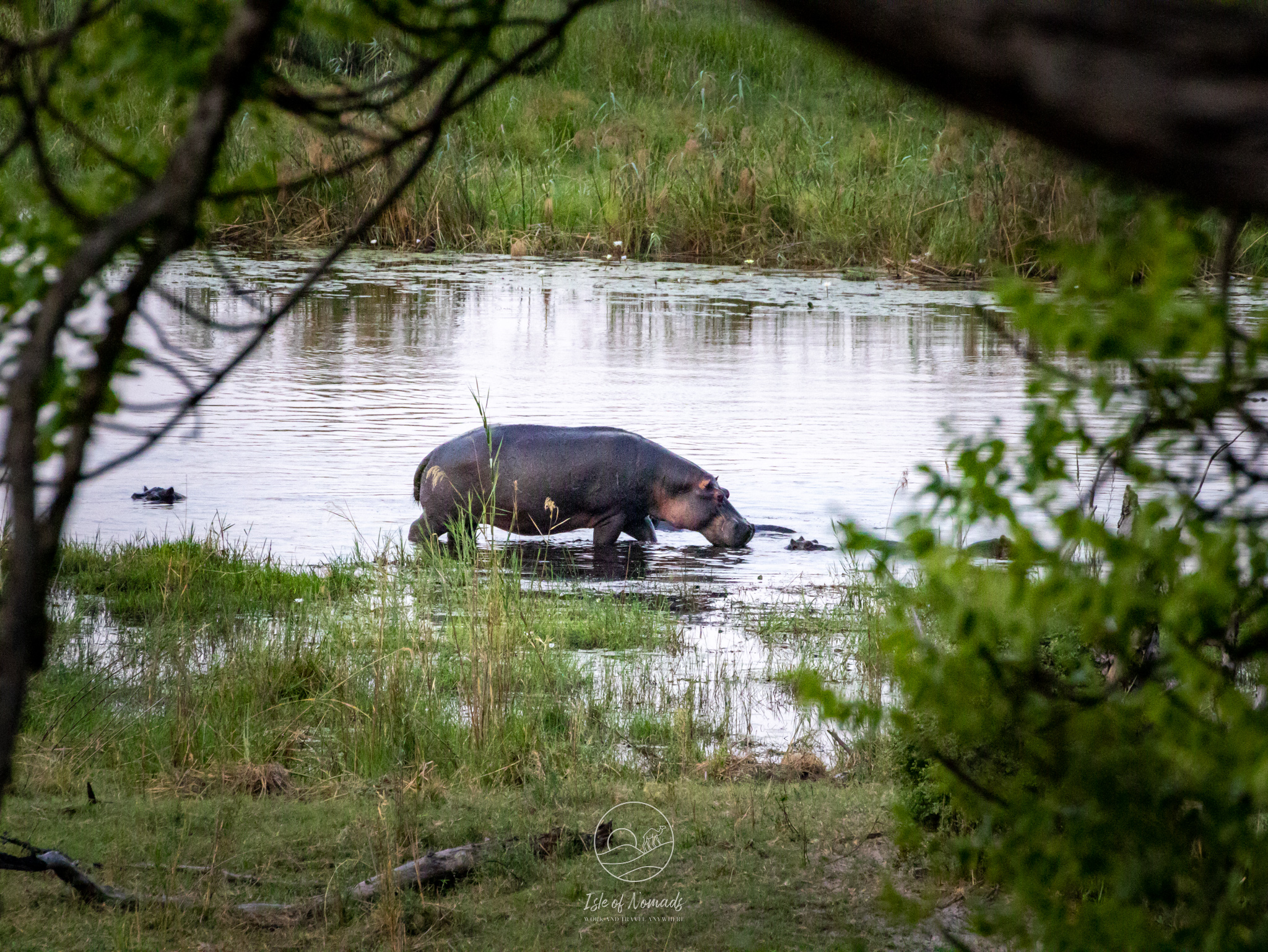
What to do in 8 weeks in Southern Africa? Weeks 5 & 6
--Week 5--
Drive across the border and to Kasane on day 30. Keep your eyes open for wildlife! The only leopard we saw during the whole journey casually sat next to the road right after we crossed the Ngoma border.
Depending on when you arive in Kasane, you can already do an afternoon / evening safari drive into Chobe National Park. For day 31, I would recommend to go both on a water as well as a land game drive - we used this tour and loved it. We only realized after booking that we booked a private Safari that included all meals and a trip in a private boat - what a great surprise!
If you have a bit longer and are traveling between February and May, consider a day trip to the Victoria Falls in Zimbabwe. During these months, you should also have no problem to find a tour agency that takes you there without you having to cross another border in your rental vehicle. (As we were there in November when the Falls dry up to only a drizzle we decided to skip this.)
The Okavango Delta is a bit of a tricky destination when it comes to self-driving without a 4x4. If you have the time and the money, leave your car in either Kasane or in Maun and book a few nights in one of the luxury lodges deep inside the Okavango Delta. The cheapest rates I saw start at around 650USD per night (usually there is a minimum stay of 2-3 nights) and include a pick-up by plane or by boat. The experience you will have with day safaris from Kasane and Maun will be a bit different, but it nevertheless is a great way to experience Botswana and the Okavango Delta.

Drive the 620km from Kasane to Maun (ca. 7h30min) on Day 32. We stayed at the Maun Studios and can highly recommend it: It is clean, nicely furnished and located in the middle of the jungle, with a beautiful garden. We could watch all kinds of colourful birds during breakfast and spend one day just lounging by the pool.
Spend two days (day 33 & 34) in Maun. You can go on another Safari, e.g. a day trip to Moremi Game Reserve. Elephant Havens is an Elephant sanctuary just outside of Maun (45min driving time) that makes for another thrilling half day trip. It is accessible by normal car, but you need a bit of confidence when driving the unpaved road.
Start early on Day 35 - at 700km and 8h driving time this is the longest driving day of the itinerary. Drive across the border at Groblersburg and sleep right after the border in the Klippan River Lodge. This Lodge won't win any prizes for beauty, but it is a clean and friendly place to stay in after a long day of driving.


--Week 6--
Week 6 starts with another day of driving, however at ca. 400km and 5hours (depending on where exactly you are staying) a bit of a shorter one. This will get you to the region around the Kruger National Park. In order to be able to make the most of your days here, base yourself somewhere between Bushbuckridge and Hoedspruit.
Spend three days (Days 37-39) in the Kruger National Park and its surroundings: Two days of exploring inside the Park and going on either self-drive Safaris or joining organized drives. The park is very accessible for non-4x4 vehicles, but it is huge and has several entrances. Head to the Kruger NP website for an overview of the whole park and its sites. If you do not feel like driving anymore and would like some help spotting animals, you can join one of the one of the many game drives that are offered.
You should set aside one day to experience the Blyde River Canyon. Start early in the morning and join a boat tour on the Blyde River Dam. Then drive 1h20min to reach Three Rondavels View Point. If you feel like hiking, this 7km loop offers breathtaking views of the Canyon. From the viewpoints, continue driving for another 20min until you reach Bourke's Luck Potholes. When Cordt and me visited we continued along the road to Graskop so we could drive in a loop, but I found the views after the potholes (including God’s Window) were not worth the detour.

Day 40 is a long driving day - from the Kruger NP it will take you 600km and around 7 hours to reach Bethlehem, where you will spend one night. Get up early the next morning (day 41) to drive through the Golden Gate National Park. Stop at Holkrans Hiking Trail for an easy stroll with beautiful views.
Spend at least two days hiking in the Drakensberg mountains. There is so much to do here that you could easily spend a week and not get bored, so if you have more time definitely take it - this is one of the destinations in South Africa that Cordt and me absolutely want to come back to. (Also because we were a bit unlucky with the weather and could not hike as much as we wanted to). For ideas on which hikes to do, head to AllTrails. The most famous ones are the Tugela Falls hike (apparently very demanding!) and the hike to Cathedral Peak.
Other great acitivities in the region are a Canopy Tour and the Bird of Prey Center. In terms of accommodation, I recommend the Goodland Cottages.

What to do in 8 weeks in Southern Africa? Weeks 7 & 8
--Week 7--
On day 44, drive the 230 km (ca 3h) to Durban. Spend one day in the city - if you are here during whale watching season (May through to November), make sure to include a boat tour. Otherwise check out the beaches, head for a surfin lesson or just enjoy strolling around the city.
The next day start early to reach Chintsa by evening (630km, ca. 8 hours driving). Spend half a day in Chintsa, exploring the rough and deserted beaches of the South African Wild Coast, and make your way to Kenton on Sea or Port Alfred (200km, 2h 30min driving time) in the afternoon.
Both Kenton on Sea and Port Alfred are cute little towns known for their beaches and tranquility - stay for one day (Day 48) and explore the coast, go on a horse riding trip or take a surfing lesson.
Drive to Plettenberg Bay on Day 49 (360km, ca. 4h). Take your time for this drive: both Jeffreys Bay and Cape St Francis are worth a stop. In Cape St Francis you can walk around the lighthouse at the Wildside trail. First Light Coffee Bar is a great stop for breakfast, lunch or just to grab a quick coffee.

And then you've reached Plettenberg Bay! This is one of my favorite towns in South Africa - it is small and doesn't look like much, but there is so much to do in the surroundings. I have been here 4 times already and every time I go I discover something new. Refer to our Google Map for my recommendations of where to stay and where to eat!
--Week 8--
Three days in Plettenberg Bay (Days 50-52) is exactly enough so you can get a taste of the area and will want to come back. Spend one day in Plettenberg itself: Book a tour to go swimming with seals for the morning, and then head to Robberg Nature Reserve in the afternoon. I recommend you allocate 2-3 hours to walk the Witsand Circuit, and then make your way back to Plettenberg in time to watch the sunset on the Lookout Beach.
Spend your second day in the Tsitsikamma National Park. You can go on one of the many hikes, but do not miss the one across the suspension bridge to Stormsriver Viewpoint. The last time we were there we also went on a Kayak Adventure with Untouched Adventures for the first time and it was a fun way to experience more of the National Park.


One day in Plettenberg should be dedicated to the many thrilling outdoor adventures to be had here. You can go abseiling (that's what we did, highly recommended!), Bungee Jumping, surfing or horseback riding. Other fun activities include a visit to Birds of Eden or the Lawnwood Snake Sanctuary.
If you really love hiking and have more than 8 weeks for this itinerary, you can check out the multi-day Otter Trail. Depending on your speed, it takes 2-3 days to complete.
On day 53 of your journey, drive slowly to Oudtshoorn. If you were to drive without stops it would take you around 2 hours (150km), but there are a few great stops on the way: Knysna Heads View Point, Brenton Beach or Buffels Bay with Lunch at Wildside Beach Restaurant, the Beach at Wilderness, and the Garden Route Botanical Garden. If you have fair weather stop at Outeniqua Pass Lookout Point.

Spend the next day in Oudtshoorn: You can visit the Kango caves, head to an Ostrich farm and drive towards (or even across) the Swartberg Pass (using a normal car, the road there is only driveable in good weather).
For the last two days of your trip, you can either spend one more day in the cute town of Swellendam or drive to Hermanus and spend the day on the coast before making your way back to Cape Town.
What to do in 10 weeks in Southern Africa?
If you have a few weeks more time, you can significantly slow down the itinerary described above. Consider adding 1-2 days in Windhoek and allowing for one more day in the Caprivi strip. You can also stay in the region of Polokwane in South Africa for 1-2 days so you do not have several long driving days one after the other.
If you like hiking and nature, add 1-3 days in Drakensberg and maybe consider driving through and staying in Lesotho for a bit. Another worthwile stop is 2-3 days in the Johannesbug and Pretoria area. When driving down the South African coast, add another 2 days on the Wild Coast or around the Garden route.
What to do in 12 weeks in Southern Africa?
If you have another full two weeks more, extend your itinerary by driving a loop that includes Eswatini and adds either iSimangaliso Wetland Park or Hluhluwe–iMfolozi Park.
Try our Wine app
We recently finished the first version of a passion side-project that helps people discover vineyards in the Cape region — based on things like your wine preferences, whether you’re going solo or with friends, if you want to have lunch with your tasting, and even the weather.
If you love the winelands and enjoy trying out new tools, we’d love your help! We’re looking for a few people to test it out and tell us what you think — what works, what doesn’t, and what you'd love to see added. No catch, just something we built for fun and want to improve.
🚨 It’s iOS only for now.
💰 This is free of course - we are looking for feedback on something we built.
📩 If you're keen to test it, just drop us an email (info[at]zermin.de) and we’ll add you to the beta list.
Complete Travel Guide
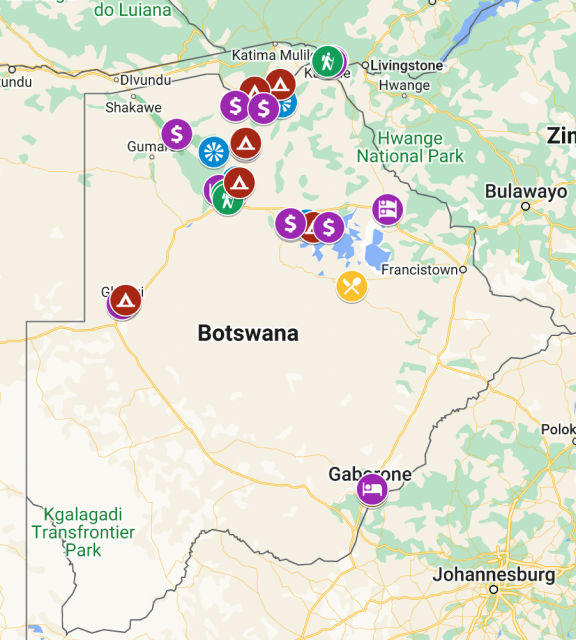
Are you looking for the ultimate travel guide to South Africa, Namibia or Botswana? Discover the best of these beautiful countries with my curated Travel Map!
- Best hotels & restaurants
- Hidden gems & local secrets
- Must-see attractions
- Travel tips & recommendations


